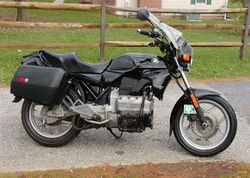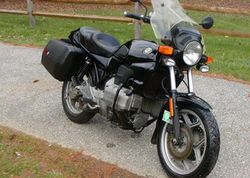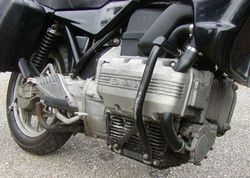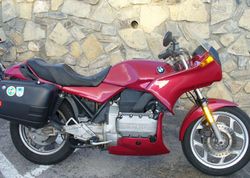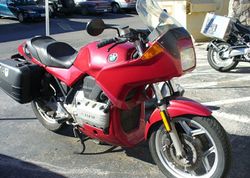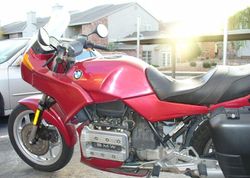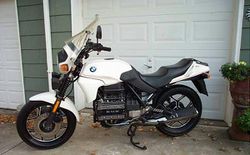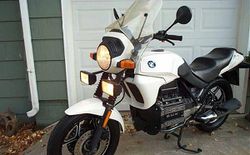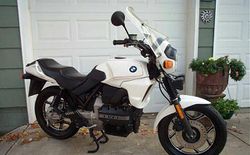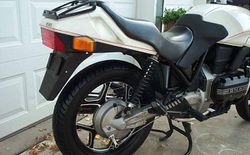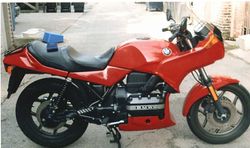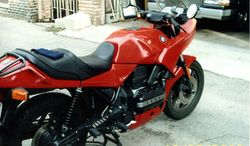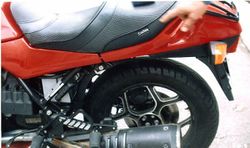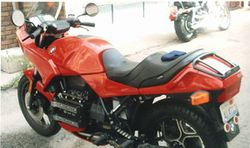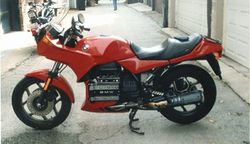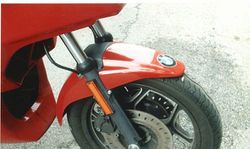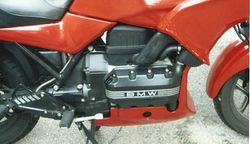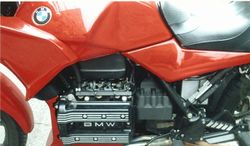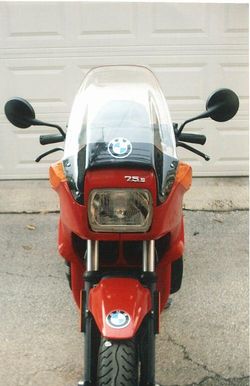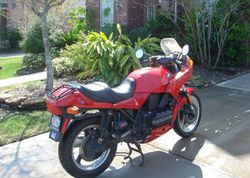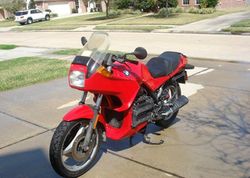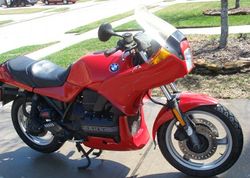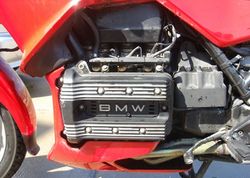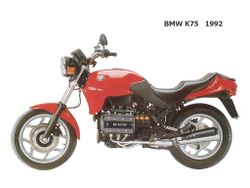Difference between revisions of "BMW K75"
m (Robot: Automated text replacement (-]]+\n[[)) |
|||
| Line 40: | Line 40: | ||
|competition = | |competition = | ||
}} | }} | ||
An all-new design that was supposed to replace [[BMW]]'s traditional flat-twins, the [[BMW K100|BMW K100]] arrived for 1984 restating the virtues of solidity, comfort and exemplary build quality long associated with the marque. An 8-valve twin-cam unit displacing 998cc, the brick-like, four-cylinder motor was laid on its side, lowering the center of gravity, and mounted fore-and-aft to facilitate the retention of BMW's characteristic shaft drive. Bosch electronic fuel injection was employed and the long-stroke four developed its maximum output of 90bhp at a relatively low 8,000rpm. In 1985 the K100 spawned a 740cc three-cylinder K75 variant that featured a 120-degree crankshaft and a higher compression ratio. Weighing less than the K100 and with 75bhp on tap, the K75 was a lively performer and deservedly popular, but did not receive the development that went into the four-cylinder models, which would later benefit from four-valves-per-cylinder heads. The usual range of BMW model variants was produced up to the end of three-cylinder K-Series production in 1995. | |||
==1986== | ==1986== | ||
[[Image:1986-BMW-K75-Black-6800-0.jpg|left|thumb|1986 BMW K75 in Black]] | [[Image:1986-BMW-K75-Black-6800-0.jpg|left|thumb|1986 BMW K75 in Black]] | ||
Revision as of 19:25, 20 January 2011
| Manufacturer | BMW |
|---|---|
| Production | 85-95 |
| Sparkplug | D8EA '85-95 |
| Battery | 53030 '85-95 |
| Front Tire | 100/90-18 '85-95 |
| Rear Tire | 130/90-17 '85-95 |
| Manuals | Service Manual |
| Tech Specs · Brochures · Reviews · Ads · Videos | |
An all-new design that was supposed to replace BMW's traditional flat-twins, the BMW K100 arrived for 1984 restating the virtues of solidity, comfort and exemplary build quality long associated with the marque. An 8-valve twin-cam unit displacing 998cc, the brick-like, four-cylinder motor was laid on its side, lowering the center of gravity, and mounted fore-and-aft to facilitate the retention of BMW's characteristic shaft drive. Bosch electronic fuel injection was employed and the long-stroke four developed its maximum output of 90bhp at a relatively low 8,000rpm. In 1985 the K100 spawned a 740cc three-cylinder K75 variant that featured a 120-degree crankshaft and a higher compression ratio. Weighing less than the K100 and with 75bhp on tap, the K75 was a lively performer and deservedly popular, but did not receive the development that went into the four-cylinder models, which would later benefit from four-valves-per-cylinder heads. The usual range of BMW model variants was produced up to the end of three-cylinder K-Series production in 1995.
1986
1987
1988
- Three Cylinder
- Fuel Injected
1990
1991
1992
- Spark Plug: NGK D7EA
| |||||||||||||||||
